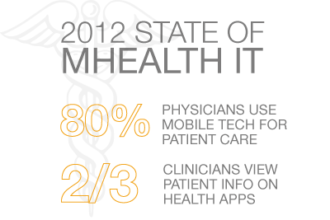The Health and Development Foundation, a Russian NGO working in public health communication and outreach, has developed an innovative mHealth program to create positive changes in the health behavior and knowledge of an at-risk population: clients with a history of injection drug use or HIV. 
The Problem
The Health and Development Foundation, a Russian NGO working in public health communication and outreach, has developed an innovative mHealth program to create positive changes in the health behavior and knowledge of an at-risk population: clients with a history of injection drug use or HIV. 
The Problem
Statistics on Russian HIV prevalence clearly indicate that the main factor in HIV transmission is injection drug use; an estimated 80% of all new cases of HIV infection from 1987 to 2008 were associated with injection drug use and opioid dependence, and the number of HIV+ women is also increasing [1]. This makes efforts to address the interconnected problems of HIV and injection drug use among women a critical element of measures aimed at improving maternal and child health in Russia (MDGs 4 and 5).
At the same time, organizations and institutions providing substance abuse and HIV/AIDS care and prevention in Russia have traditionally operated independently, with specialists in both spheres having limited knowledge of the other, lessening the effectiveness of client treatment. Clients are not referred from AIDS centers to substance abuse clinics and vice versa, increasing the likelihood that they will drop out of treatment.
This is particularly true of female IDUs/substance abusers, as the Russian health care system provides a limited range of specific “women-centered” treatment and rehabilitation centers for female substance abusers.
In addition, many approaches effective internationally are difficult to implement in the existing government structures, such as needle exchange programs, which have met with strong government resistance. The government system is also currently not flexible enough to carry out activities like outreach, so crucial to engaging the at-risk populations in question.
One Approach
The Health and Development Foundation has developed a program, “A Comprehensive mHealth Approach to Reaching At-Risk Women,” aimed at keeping the at-risk groups of women and new mothers who are HIV+ and/or have injection drug use in their medical history informed and connected to a multi-sectoral medical and social support network and system of care.
In 2010, the Health and Development Foundation launched a pilot version of this mHealth initiative in St. Petersburg. Clients who came to St. Petersburg Maternity Hospital No. 16, a hospital for high-risk patients, during pregnancy or for delivery were invited to join the program based on the following criteria: injection drug use in their medical history, experience as a commercial sex worker, or HIV+ status. Female clients were selected for the same criteria at St. Petersburg State Narcological Hospital.
Selected clients received individual counseling, and upon release from the hospital, these women received text  messages, developed by relevant health care specialists, with content related to counseling topics: encouraging adherence to substance abuse treatment, the prevention and treatment of HIV and other infectious diseases, reproductive health, information on childcare, and more.
messages, developed by relevant health care specialists, with content related to counseling topics: encouraging adherence to substance abuse treatment, the prevention and treatment of HIV and other infectious diseases, reproductive health, information on childcare, and more.
This mHealth pilot program was part of a comprehensive initiative in St. Petersburg intended to create a support system to ensure the most effective care for HIV and substance abuse risk groups through interagency and intersectoral collaboration, training of health care providers, utilization of NGO peer counselors, and HIV/substance abuse counseling for clients.
Both the initiative as a whole and the mHealth component showed positive results, with a high percentage of clients willing to participate, and M+E data show positive outcomes in terms of behavior change (more HIV tests and treatment received, a higher willingness to continue substance abuse treatment) and attitude of clients towards the text message service (the amount of clients who actively used text message information or saved texts as reference material).
These efforts created a support network for clients, helping to ensure a lower drop-out rate from the system of care by increasing referrals between different types of medical centers, by providing multi-faceted counseling for clients at a single location, and by enlisting the aid of peer counselors, as well as improving the skills of health care providers by interdisciplinary training.
The Future
This program is temporarily on hiatus due to lack of funding, but the regional network of experts, government supporters, and centers is still in place, as well as the text message platform used in the pilot. When funding is secured, HDF is prepared for a regional re-launch of both the woman-specific and larger program, both with the text-message component, and then to scale the program up to the national level.
1. Information Bulletin no 33 of the Russian Federal AIDS Center. Moscow 2009. Available at: http://hivrussia.org/files/bul_33.pdf
To read other posts in this exclusive ongoing series, please visit the Mobile Health Around the Globe main page. And if you have a Mobile Health Around the Globe story to tell, please post a comment below or email me at joan@socialmediatoday.com Thanks!








